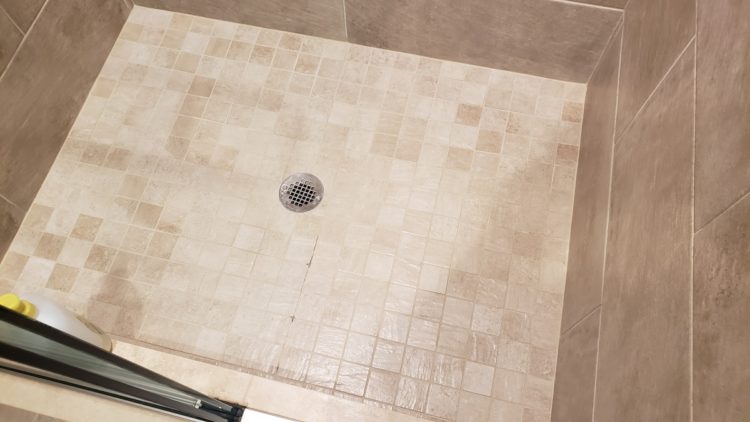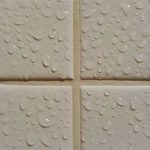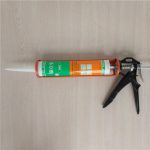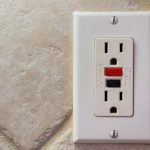Have you ever stepped out of the shower and noticed that the grout between your tiles is still wet, even after you’ve wiped down the walls?
If so, you’re not alone. Many people find that their grout stays wet after showering, and it can be a real nuisance.
The good news is that there are several reasons why this might be happening, and once you understand them, you can take steps to prevent it from occurring.
In this article, we’ll explore why the grout stays wet after showering, what causes it, and how to fix it.
We’ll also provide some tips on how to keep your grout dry in the future.
So if you’re tired of dealing with wet grout after every shower, read on to learn more.
Contents
- 1 Why Does The Grout Stay Wet After Shower?
- 2 Effects of Wet Grout
- 3 Prevention of Wet Grout
- 4 Cleaning Wet Grout
- 5 Repairing Damaged Grout
- 6 Replacing Old Grout
- 7 Maintaining Grout After Installation
- 8 Benefits of Sealing Grout
- 9 Different Types Of Sealants For Grouts
- 10 Advantages Of Epoxy Grouts
- 11 Conclusion
Why Does The Grout Stay Wet After Shower?
If you have noticed that the grout in your shower stays wet after your shower, there are a few possible reasons why.
One of the most common reasons is poor ventilation. If there is not enough air circulation in the bathroom, moisture can build up and stay in the grout.
This can also happen if the bathroom is not well insulated. Another reason could be that the grout wasn’t sealed properly when it was installed.
Sealing prevents water from seeping into the grout, so if it wasn’t done correctly, moisture will remain in the area. Finally, it could be that you are using too much cleaning product on the grout.
Cleaning products can leave a residue on the surface, which will cause water to stay on it longer. To prevent this, use a mild cleaner and avoid scrubbing too hard when cleaning the grout.
If you continue to have issues with wet grout after showering, it may be time to call a professional to take a look at your bathroom and see what needs to be done to fix it.
Effects of Wet Grout
When grout stays wet for too long, it can lead to some issues.
The most common one is mold growth, which can be hazardous to your health. Additionally, wet grout can also cause discoloration and staining on the surrounding tiles and walls.
Furthermore, if left untreated, wet grout can lead to structural damage due to water seeping into the walls and floors beneath it.
Prevention of Wet Grout
The best way to prevent wet grout after a shower is to ensure that your bathroom is properly ventilated.
This means making sure that there are adequate air vents and fans installed to allow moisture to escape quickly after a shower.
Additionally, you should also make sure that any cracks or leaks in the walls or floor are repaired as soon as possible to prevent water from seeping into the grout.
Lastly, you should also make sure that all grout lines are sealed properly to prevent moisture from being absorbed by them.
Cleaning Wet Grout
If your grout does become wet after a shower, it’s important to clean it up as soon as possible to prevent any further damage from occurring.
The best way to do this is by using a mixture of warm water and mild detergent and scrubbing the affected area with a soft brush or cloth.
Additionally, you may also want to use a commercial cleaner specifically designed for cleaning grout to ensure that all dirt and debris are removed from the surface.
Repairing Damaged Grout
If your grout has been damaged due to excessive moisture or other factors, then you may need to repair it to restore its original appearance and functionality.
This typically involves removing any broken pieces of grout and replacing them with new ones before sealing them with a waterproof sealant or epoxy resin to protect them from further damage.
Additionally, you may also need to apply a new layer of grout over the affected area to ensure that no gaps remain between tiles or walls and floors where moisture could enter again.
Replacing Old Grout
In some cases, it may be necessary for you to replace old or damaged grout with new material to prevent further issues from occurring due to excessive moisture buildup after showers.
This typically involves chipping away at the old material before applying a new layer of a waterproof sealant or epoxy resin over it before adding fresh layers of new grout on top.
Additionally, you want to use special tools such as an angle grinder to remove any stubborn pieces of old material that won’t come off easily with hand tools alone.
Maintaining Grout After Installation
Once you have installed new grout after repairing or replacing old material, you must maintain it properly so it stays looking good and functioning properly over time.
This typically involves regularly cleaning the surface with warm water and mild detergent, as well as resealing it every few years with a waterproof sealant or epoxy resin in order to protect against moisture buildup after showers or baths.
Additionally, you should also inspect your grout regularly for any signs of cracking or discoloration, which could indicate that there is an underlying issue, such as poor ventilation, that needs addressing immediately before further damage occurs due to excessive moisture buildup after showers or baths.
Benefits of Sealing Grout
Sealing your grout lines is one of the most important steps when installing tile flooring, as this helps protect against water damage caused by excessive moisture buildup after showers or baths.
In addition, sealing your grout will help keep it looking good for longer by preventing dirt and debris from becoming embedded within it, which can lead to discoloration over time.
Furthermore, sealing your grout will help reduce mold growth, which can be hazardous to your health if left untreated.
Different Types Of Sealants For Grouts
When sealing your grout, there are several different types of sealants available on the market today that offer varying levels of protection against water damage.
These include silicone-based sealants, acrylic-based sealants, polyurethane-based sealants, epoxy-based sealants, and ultraviolet light-based sealants, which are designed to work especially well in areas with high moisture levels after showers or baths.
Advantages Of Epoxy Grouts
Epoxy grouts are similar to urethane grouts but offer several additional advantages over traditional urethane grouts.
These include greater resistance to stains and moisture as well as greater resistance to mold and mildew growth, which can occur due to moisture buildup after showers or baths.
Additionally, epoxy grouts are also more environmentally friendly than urethane grouts, as they don’t contain any volatile organic compounds, which are harmful to the environment if released into the environment during or after installation.
Lastly, epoxy grouts are also typically more durable than urethane grouts, which means that they can last for longer periods without cracking or becoming discolored from exposure to moisture.
Conclusion
The grout staying wet after a shower is a common problem that can be caused by a few different factors.
It could be due to inadequate ventilation, poor grout sealing, or water leaking from the shower walls.
To prevent this from occurring, it is important to make sure that your bathroom is properly ventilated and that your grout is sealed properly.
Additionally, you should check for any signs of water leakage from the shower walls and repair any damage as soon as possible. By taking these steps, you can ensure that your grout stays dry after each shower.





